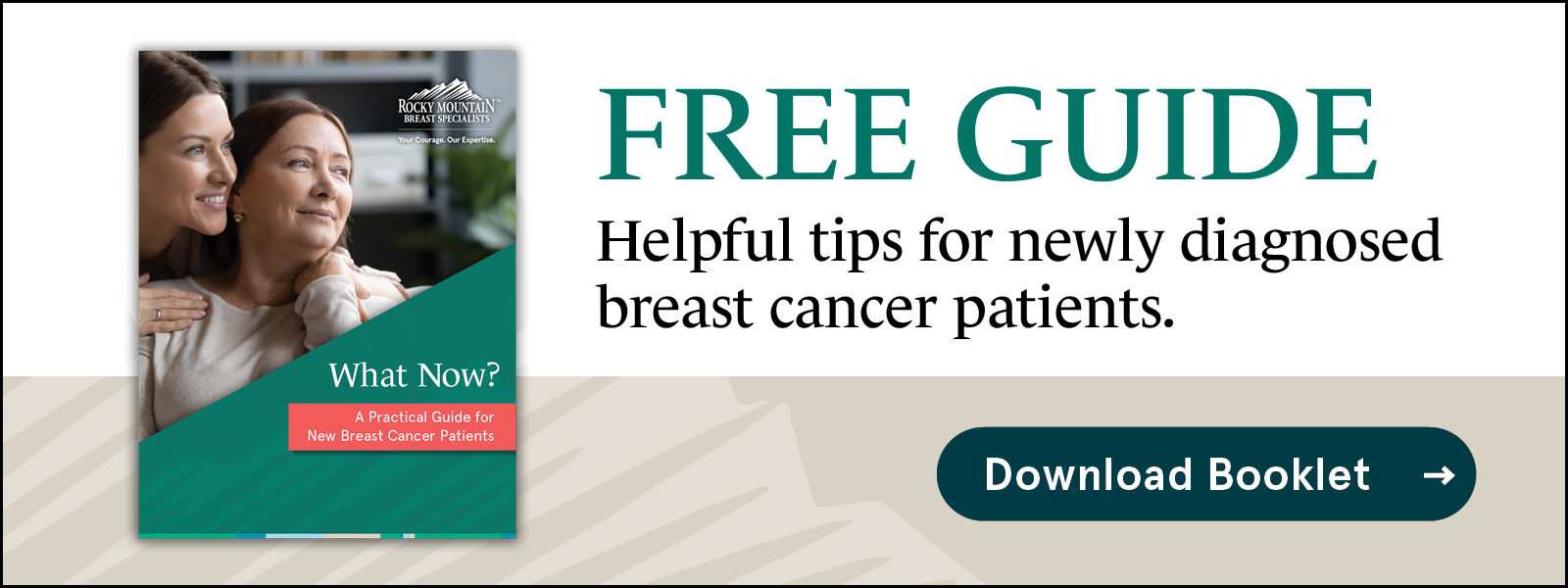I Was Diagnosed with Breast Cancer. What’s My Prognosis?
5 min read

If you’ve received a breast cancer diagnosis, you’re likely focused on what’s going to happen in the next few weeks and months. There are several appointments required with the breast cancer specialist, breast cancer surgeon, and plastic surgeon. Other team members will help you through the mental, emotional, and financial aspects of planning cancer treatment. Through all of this, you’re also most likely wondering about the future. What is the likelihood that you’ll survive the next five years and beyond after breast cancer treatment?
The outlook for your survival is called the “prognosis.” The prognosis for each breast cancer patient is different based on several factors including:
- The size of the tumor
- The grade of tumor, which indicates how quickly it’s likely to grow
- If cancer has spread
- If the tumor has a hormone or genetic mutations
- If lymph nodes are involved
- Your age and overall health
- Your treatment preferences
What is the Process for Determining a Patient’s Prognosis?
Most patients have additional testing and exams after a screening mammogram identifies something out of the ordinary. Other times the patient will feel a lump or notice a change in the breast that prompts further testing. These diagnostic tests and procedures may include:
- Examining both breasts and armpits for a lump, swelling, or changes in breast size, shape, or appearance.
- A diagnostic mammogram that provides more detail of abnormalities.
- Breast ultrasound which determines if a lump is a solid mass or a fluid-filled cyst.
- Magnetic resonance imaging (MRI) with an injection of dye that creates images of the inside of your breast.
- A biopsy which removes a tissue sample from the abnormal area for laboratory analysis. A biopsy is the only accurate way to diagnose breast cancer.
Read more about diagnosing breast cancer.
Breast Cancer Stage is a Guide for Prognosis and Treatment
Based on what is seen in the images and other test results your oncologist will determine the stage of breast cancer. In some cases, the stage isn’t officially determined until the surgeon can look at the lymph nodes and have them tested for cancer cells. However, in other cases, the oncologist can develop a “clinical stage” based on what’s known before surgery. The stage plays a role in the next steps for treatment, along with factors such as hormone receptors and HER2 receptors found on the cancer cells. A stage of 0 - IV (4) is used for treatment planning. However, stages are defined somewhat differently when calculating survival rates.
What is a Survival Rate for Breast Cancer?
Cancer specialists discuss outcomes based on a 5-year survival rate. This is largely because the cancer center is able to follow up with their patients for about five years after treatment. It doesn’t mean patients don’t live long past five years after breast cancer treatment!
The American Cancer Society uses a term called the relative survival rate. This is not about your family members. It’s a comparison of women with the same type and stage of breast cancer “relative to” the rest of the women in the overall population of the United States.
For example, if the 5-year relative survival rate for a specific stage of breast cancer is 90%, it means that women who have that cancer are, on average, about 90% as likely as women who don’t have that cancer to live for at least 5 years after being diagnosed.
The National Cancer Institute maintains the SEER (Surveillance, Epidemiology, And End Results) database with survival data for many types of cancer. This database doesn’t use specific stages to determine the prognosis, mostly because there are a few ways to stage some cancers. The NCI groups cancer into three categories when determining prognosis:
- Localized: There is no sign that the cancer has spread outside of the breast.
- Regional: The cancer has spread outside the breast to nearby structures or lymph nodes.
- Distant: The cancer has spread to distant parts of the body such as the lungs, liver or bones.
The prognosis is based on what was found during the initial diagnosis process.
The 5-year Relative Survival Rates for Breast Cancer Patients in the US
The following data is for women diagnosed with breast cancer between 2012 and 2018. Because of recent treatment advancements, the survival rates are likely even better than listed here.
- Localized: 99%
- Regional: 86%
- Distant: 30%
Across all of the stages, there is an average of a 91% 5-year relative survival rate. The prognosis for women with triple-negative breast cancer and inflammatory breast cancer are not represented in these numbers.
Triple-negative breast cancer 5-year relative survival rates:
- Localized: 91%
- Regional: 66%
- Distant:12%
Average survival across all stages of triple-negative breast cancer is 71%.
Inflammatory breast cancer 5-year relative survival rates:
- Locaizedl: Does not apply since it’s found in the skin at the time of diagnosis
- Regional: 52%
- Distant:19%
Average survival across all stages of triple-negative breast cancer is 39%.
Understanding Breast Cancer Statistics
It’s probably not surprising that the earlier breast cancer is found, the easier it is to treat. That’s why the survival rate for localized breast cancer is so high. The longer it grows before treatment and the further it spreads, the more difficult it is to kill all the cancer cells that are circulating through the lymph system and beyond.
There are factors that impact the survival rate too such as:
- The patient’s age. The older you are at diagnosis, the lower the survival rate. According to the National Institutes of Health, women ages 65 to 74, have a 93% five-year survival rate. It drops to 86% for women over age 75.
- The patient’s ability to tolerate the recommended breast cancer treatments. If there are treatments that you choose to stop, or avoid altogether, because of how your body responds the survival rate could be lower.
- Personal choices can also impact outcomes. If, for instance, a patient chooses not to undergo radiation therapy after a lumpectomy there is a higher risk of the cancer returning. While this is a very personal choice, and one you are free to make, it will alter the survival rate.
Support After a Breast Cancer Diagnosis Goes a Long Way
Social and emotional support are critical to improving breast cancer prognosis. Support reduces stress and improves emotional well-being. Working alongside your oncology team, you will need an emotional support group during and after cancer treatment.
A cancer diagnosis is too big to tackle alone. Ask your oncology team to identify coping resources such as support networks, local support groups, and emotional counseling or therapy. Never be hesitant to ask for help when it comes to your health.
Palliative care is a growing type of supportive care for critically ill patients. This specialized medical care focuses on improving the prognosis and comfort of patients by relieving pain and other symptoms and providing support that works with treatment.
The breast cancer specialists at RMBS work hard to create treatment plans for their patients that will give them the best possible chance of surviving breast cancer for many years to come. We also offer many different classes and support programs that can help you manage life with breast cancer and as a survivor.
Don’t miss out on screening if you have not received a diagnosis. And be sure you attend all follow up appointments with the oncologist if you were diagnosed. These actions will go a long way to increase precious time with loved ones in your life.


